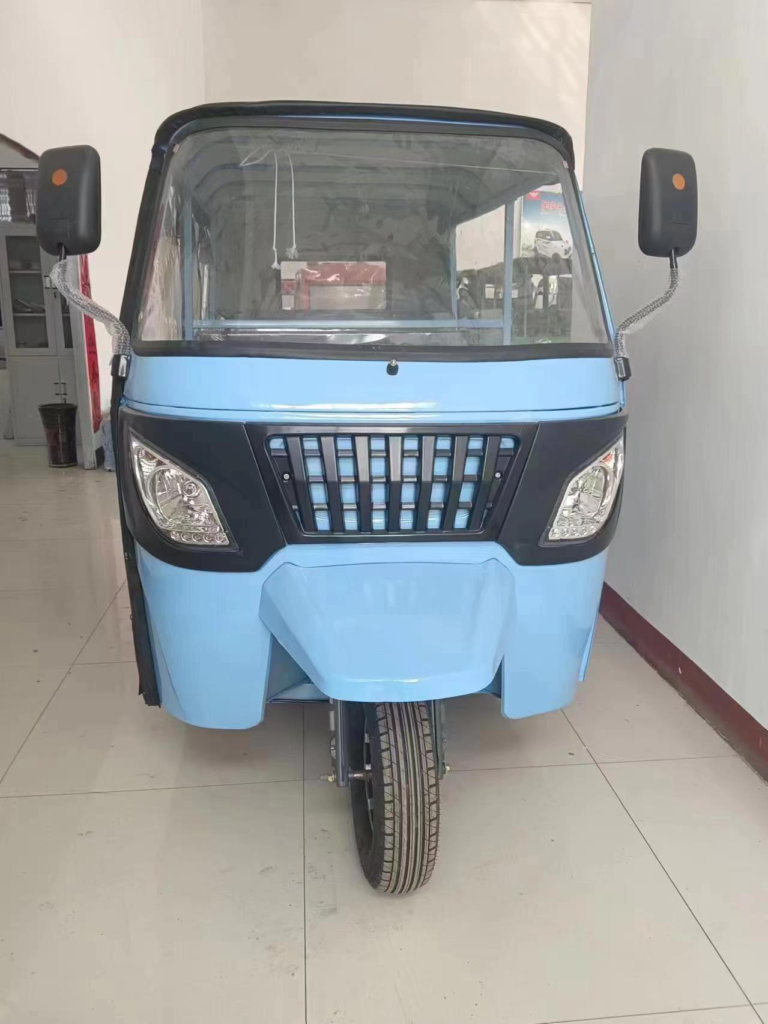In recent years, the growing popularity of electric vehicles has extended to electric tricycles, which are increasingly being adopted for both personal and commercial purposes. With their low operating costs and environmental benefits, electric tricycles offer a practical and economical alternative to traditional vehicles. This article will explore the financial advantages of electric tricycles, focusing on their operating costs and the potential savings they bring to users.

I. Understanding the Cost Benefits of Electric Tricycles
A. Low Energy Consumption
Electric tricycles operate on rechargeable batteries, which are far more cost-efficient compared to internal combustion engines. Unlike gasoline-powered vehicles, which require frequent and expensive fuel refills, electric tricycles can be charged using a standard electrical outlet. The cost of electricity is significantly lower than fuel costs, making these vehicles an attractive option for cost-conscious users.
For example, the electricity needed to charge an electric tricycle’s battery for a full day of operation often costs less than a cup of coffee. Over time, these savings add up, making electric tricycles a highly economical mode of transportation.
B. Minimal Maintenance Costs
One of the significant financial advantages of electric tricycles is their low maintenance requirements. Traditional vehicles have complex engines with numerous moving parts that require frequent servicing and replacement. Electric tricycles, by contrast, have fewer mechanical components, reducing the need for costly repairs and maintenance.
Electric freight tricycle suppliers often design their models to be durable and reliable, ensuring that users experience minimal downtime and repair expenses. These vehicles typically do not require oil changes, transmission repairs, or exhaust system replacements, which are common maintenance costs for gasoline-powered vehicles.
II. Applications of Electric Tricycles in Transportation
A. Personal Transportation
For individuals, electric tricycles provide a cost-effective alternative to cars or motorcycles, especially for short-distance commutes. They are easy to operate and maneuver, making them ideal for navigating urban environments.
In addition, electric tricycles are an excellent option for individuals who prioritize sustainability. By using an electric tricycle, individuals can reduce their carbon footprint while enjoying a convenient and affordable mode of transportation.
B. Cargo Transportation
Electric tricycles are not only practical for personal use but are also a game-changer for businesses. In particular, electric tricycles for cargo transportation are revolutionizing logistics and delivery services. With their ability to carry significant loads while maintaining low operating costs, these vehicles are becoming the go-to solution for businesses looking to optimize their supply chain operations.
An electric tricycle for cargo transportation can handle a wide range of goods, from groceries to industrial materials. Their compact size allows them to navigate crowded city streets and access areas that larger vehicles cannot reach. Businesses that adopt electric tricycles benefit from reduced fuel costs, lower maintenance expenses, and improved delivery efficiency.
III. The Role of Electric Freight Tricycle Suppliers
The affordability and reliability of electric tricycles depend heavily on their design and quality, which is where electric freight tricycle suppliers play a crucial role. Leading suppliers focus on producing tricycles that are not only cost-efficient but also robust enough to handle various applications.
These suppliers prioritize battery efficiency, ensuring that electric tricycles can travel long distances on a single charge. They also invest in lightweight but durable materials to enhance performance and longevity. By working with a reputable electric freight tricycle supplier, businesses and individuals can maximize the benefits of using electric tricycles.
IV. Environmental and Financial Impacts
A. Lower Emissions
In addition to their cost benefits, electric tricycles contribute to a cleaner environment. Unlike gasoline-powered vehicles, electric tricycles produce zero tailpipe emissions. This makes them a sustainable choice for individuals and businesses looking to reduce their environmental impact.
As more users adopt electric tricycles, cities can benefit from improved air quality and reduced noise pollution. Governments are also offering incentives to promote the use of electric vehicles, further reducing the financial burden on users.
B. Long-Term Savings
While the initial purchase price of an electric tricycle may seem higher than some gasoline-powered alternatives, the long-term savings are substantial. The reduced fuel and maintenance costs, combined with potential tax incentives, make electric tricycles a wise investment.
For businesses, using an electric tricycle for cargo transportation can significantly lower operating expenses, leading to higher profit margins. These savings can then be reinvested into other areas of the business, further enhancing growth and sustainability.
V. Conclusion
Electric tricycles are more than just an innovative transportation solution—they are a cost-effective and environmentally friendly choice for both individuals and businesses. With their low energy consumption, minimal maintenance requirements, and versatility in applications, electric tricycles offer unparalleled value.
For businesses, partnering with a reliable electric freight tricycle supplier ensures access to high-quality vehicles designed for efficiency and durability. Whether you’re looking for personal transportation or an electric tricycle for cargo transportation, these vehicles are a smart investment that delivers long-term financial and environmental benefits.
As the demand for sustainable and economical transportation continues to grow, electric tricycles are paving the way for a greener and more cost-efficient future.
